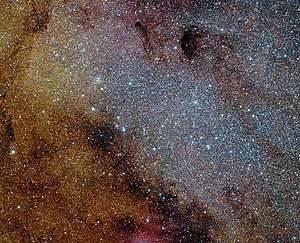M24 | NGC 6603 | Star Cloud | Sagittarius | 10,000 Light Years Away
Messier 24, also known as the Sagittarius Star Cloud, is a vast and captivating region of the Milky Way that contains a multitude of stars. Discovered by Charles Messier in 1764, this celestial complex is not a traditional star cluster but rather a dense concentration of stars within the spiral arms of our galaxy. Located approximately 10,000 light-years away in the constellation Sagittarius, Messier 24 spans a large portion of the night sky.
Messier 24 is often referred to as a “star cloud” due to its appearance as a rich and nebulous region teeming with stars. This dense aggregation of stars is situated along the Milky Way’s plane, providing a spectacular display when observed from Earth. While not a discrete cluster, Messier 24 serves as a visual reminder of the incredible diversity and sheer number of stars populating our home galaxy, offering astronomers and stargazers a captivating glimpse into the complex structure of the Milky Way.
Observations of Messier 24 have been conducted across various wavelengths to study its stellar population, providing insights into the characteristics and distribution of stars within this vast region. The study of the Sagittarius Star Cloud contributes to our understanding of galactic structure, the composition of stars in different regions of the Milky Way, and the processes that govern the formation and evolution of stars in our cosmic neighborhood. Messier 24 stands as a stunning testament to the beauty and intricacy of the night sky, illustrating the rich tapestry of stars that make up our galaxy.

